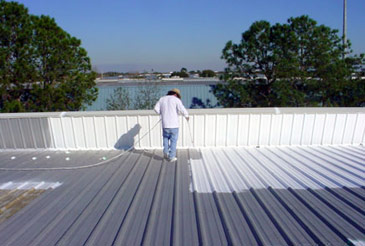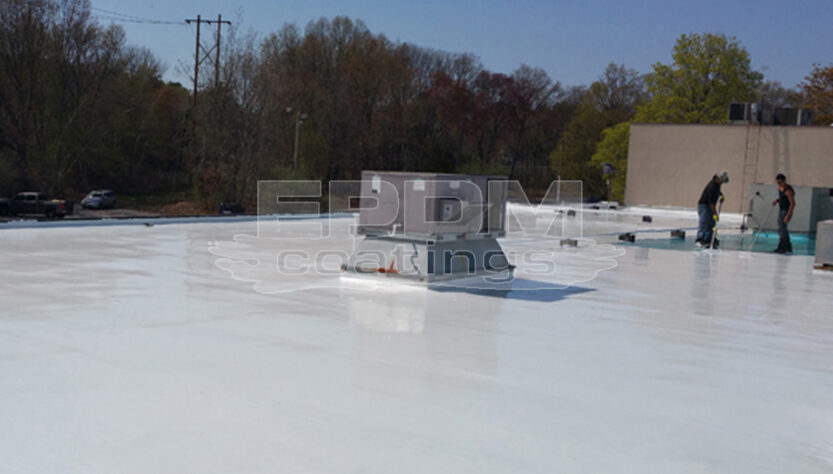There are a number of different roofing options available today, so sorting through all of them and trying to make sense of the different products can prove to be a challenge for many people. Fortunately, it’s not really that difficult to learn what’s out there so long as you are willing to look. Elastomeric Roof Coatings are made of a composite rubber/polymer compound, much like other rubber roof coatings, but they also have some additional features and benefits.

Elastomeric isn’t just a fancy name—this material actually has an elastic finish that will seal and protect a roof to keep the underlying material safe from the elements or further damage. This material has a lot of benefits to its use, including its elasticity, which makes it ideal for seasonal climates where a roof would need to endure the harsh effects of the changing seasons. The coating itself is made of polymers and acrylics and combined with titanium dioxide or other white pigments to create a reflexive, opaque finished result.
The Benefits of Elastomeric Roof Coatings
An elastomeric coating is going to offer much more flexibility than other rubber roofing materials that you can find. in addition to that, it can be used on many types of roofing, and will offer a long-lasting solution that won’t need as much attention as many other coating materials. This type of coating can also provide advantages like:
- Mildew and fungi resistance
- Seamless finish for a better appearance and stronger roof
- Specific benefits for certain roof materials, such as providing UV and ozone protection for polyurethane foam roofing
- Lower cooling costs because the surface reflects heat
- Easy to use and apply
- Non-toxic and VOC compliant
These are some of the biggest benefits that lead people to consider upgrading their roof coating to an elastomeric product. There are others to be had, and some may even depend on the type of roof you are going to be coating. Check it out for yourself and see what kind of benefits you can find.
Can This Liquid Rubber Coating Be Applied to Any Roof?
Elastomeric coatings can be applied to almost any type of flat roof. However, they may not be the right choice for every single roof or situation. Before you make a decision about any of your liquid rubber roofing choices, it can help to talk to a professional about your options and see what is going to be best. In some cases, Elastomeric coatings might be a great choice. In rare cases, it might not be ideal. How do you know? Although there are plenty of different opinions out there, your best bet is to talk to a roofing professional who can help you decide whether this is the best coating for your roof.
Some common roofing materials that can benefit from this type of liquid rubber coating include:
- Metal roofs
- Concrete roofs
- EPDM rubber roofs
- PUF roofs
- Bitumen
- Modified Bitumen (BUR)
Learn How to Get More Out of Your Roof
Now that you know a little more about elastomeric roof coatings, you will be able to go out and find what you need for your commercial or residential roof. While you’re exploring your options, feel free to take the time to learn about other liquid rubber products to ensure that you choose the best roof coatings for your needs, whether that is an elastomeric sealer or not. Whether you are recoating an EPDM rubber roof or covering the metal roof of a warehouse, this coating can offer much more protection than you might get from a basic liquid rubber roof coating. Plus, with a variety of products available, there is sure to be one that’s perfect for your roof.


